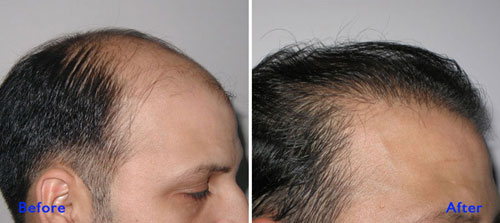www.drvaibhavshah.net
History of Hair Loss Medicine- Minoxidil
When Upjohn received permission from the FDA to test the new drug as medicine for hypertension they approached Charles A. Chidsey MD, Associate Professor of Medicine at the University of Colorado School of Medicine. who conducted two studies, the second study showing unexpected hair growth. Puzzled by this side-effect, Chidsey consulted Guinter Kahn and discussed the possibility of using minoxidil for treating hair loss.
Kahn along with his colleague Paul J. Grant MD obtained a certain amount of the drug and conducted their own research, apparently without notifying Upjohn or Chidsey. The two doctors had been experimenting with a 1% solution of minoxidil mixed with several alcohol-based liquids. They tried to patent the drug for hair loss prevention, but found that Upjohn had already done this. A decade-long trial between Kahn and Upjohn ended with Kahn's name included in a consolidated patent (U.S. #4,596,812 Charles A Chidsey, III and Guinter Kahn) in 1986 and royalties from the company to both Kahn and Grant.
Meantime the effect of minoxidil on hair loss prevention was so clear that in the 80's physicians were prescribing Loniten off-label to their balding patients.
In August 18, 1988 the FDA finally approved the drug for treating baldness in men under the trade name 'Rogaine' (FDA rejected Upjohn's first choice, Regain, as misleading). The agency concluded that although "the product will not work for everyone", 39 percent of the men studied had "moderate to dense hair growth on the crown of the head".
In 1991 Upjohn made the product available for women.
On February 12, 1996 FDA approved both the over-the-counter sale of the drug and the production of generic formulations of minoxidil. Upjohn replied to that by lowering prices to half the price of the prescription drug and by releasing a prescription 5% formula of Rogaine in 1997.
In 1998 a 5% formulation of minoxidil was approved for nonprescription sale by the FDA.
As of 2014 it was the only topical product that is FDA-approved for androgenic hair loss.
The drug is available over the counter in the United Kingdom.
Dr Vaibhav Shah
www.lovethatlooks.com.
 |
| +Dr Vaibhav Shah |
History of Hair Loss Medicine- Minoxidil
When Upjohn received permission from the FDA to test the new drug as medicine for hypertension they approached Charles A. Chidsey MD, Associate Professor of Medicine at the University of Colorado School of Medicine. who conducted two studies, the second study showing unexpected hair growth. Puzzled by this side-effect, Chidsey consulted Guinter Kahn and discussed the possibility of using minoxidil for treating hair loss.
Kahn along with his colleague Paul J. Grant MD obtained a certain amount of the drug and conducted their own research, apparently without notifying Upjohn or Chidsey. The two doctors had been experimenting with a 1% solution of minoxidil mixed with several alcohol-based liquids. They tried to patent the drug for hair loss prevention, but found that Upjohn had already done this. A decade-long trial between Kahn and Upjohn ended with Kahn's name included in a consolidated patent (U.S. #4,596,812 Charles A Chidsey, III and Guinter Kahn) in 1986 and royalties from the company to both Kahn and Grant.
Meantime the effect of minoxidil on hair loss prevention was so clear that in the 80's physicians were prescribing Loniten off-label to their balding patients.
In August 18, 1988 the FDA finally approved the drug for treating baldness in men under the trade name 'Rogaine' (FDA rejected Upjohn's first choice, Regain, as misleading). The agency concluded that although "the product will not work for everyone", 39 percent of the men studied had "moderate to dense hair growth on the crown of the head".
In 1991 Upjohn made the product available for women.
On February 12, 1996 FDA approved both the over-the-counter sale of the drug and the production of generic formulations of minoxidil. Upjohn replied to that by lowering prices to half the price of the prescription drug and by releasing a prescription 5% formula of Rogaine in 1997.
In 1998 a 5% formulation of minoxidil was approved for nonprescription sale by the FDA.
As of 2014 it was the only topical product that is FDA-approved for androgenic hair loss.
The drug is available over the counter in the United Kingdom.
Dr Vaibhav Shah
www.lovethatlooks.com.
No comments:
Post a Comment